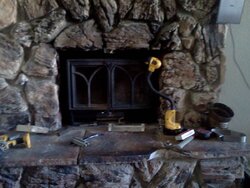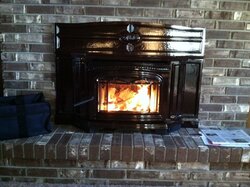It is my first year using my Jotul C450, first burner ever. I tried likk hell to get the recommended block off plate installed, just no room to do it. I understand the concept of a block off plate to keep the thermal mass of the chimney from absorbing the heat of an insert, to heat the room faster. For my existing masonry fireplace, no block off seems to be an advantage. The thermal mass of my fireplace keeps heating the living room long after coals have burned out.




